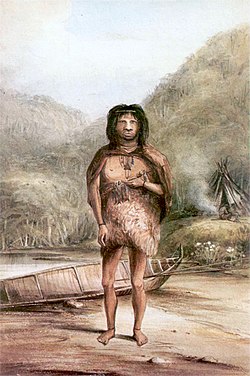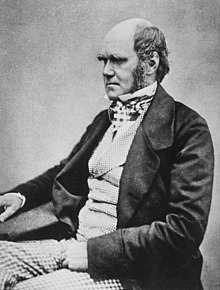Portal:History of science
The History of Science Portal
The history of science covers the development of science from ancient times to the present. It encompasses all three major branches of science: natural, social, and formal. Protoscience, early sciences, and natural philosophies such as alchemy and astrology during the Bronze Age, Iron Age, classical antiquity, and the Middle Ages declined during the early modern period after the establishment of formal disciplines of science in the Age of Enlightenment.
Science's earliest roots can be traced to Ancient Egypt and Mesopotamia around 3000 to 1200 BCE. These civilizations' contributions to mathematics, astronomy, and medicine influenced later Greek natural philosophy of classical antiquity, wherein formal attempts were made to provide explanations of events in the physical world based on natural causes. After the fall of the Western Roman Empire, knowledge of Greek conceptions of the world deteriorated in Latin-speaking Western Europe during the early centuries (400 to 1000 CE) of the Middle Ages, but continued to thrive in the Greek-speaking Byzantine Empire. Aided by translations of Greek texts, the Hellenistic worldview was preserved and absorbed into the Arabic-speaking Muslim world during the Islamic Golden Age. The recovery and assimilation of Greek works and Islamic inquiries into Western Europe from the 10th to 13th century revived the learning of natural philosophy in the West. Traditions of early science were also developed in ancient India and separately in ancient China, the Chinese model having influenced Vietnam, Korea and Japan before Western exploration. Among the Pre-Columbian peoples of Mesoamerica, the Zapotec civilization established their first known traditions of astronomy and mathematics for producing calendars, followed by other civilizations such as the Maya.
Natural philosophy was transformed during the Scientific Revolution in 16th- to 17th-century Europe, as new ideas and discoveries departed from previous Greek conceptions and traditions. The New Science that emerged was more mechanistic in its worldview, more integrated with mathematics, and more reliable and open as its knowledge was based on a newly defined scientific method. More "revolutions" in subsequent centuries soon followed. The chemical revolution of the 18th century, for instance, introduced new quantitative methods and measurements for chemistry. In the 19th century, new perspectives regarding the conservation of energy, age of Earth, and evolution came into focus. And in the 20th century, new discoveries in genetics and physics laid the foundations for new sub disciplines such as molecular biology and particle physics. Moreover, industrial and military concerns as well as the increasing complexity of new research endeavors ushered in the era of "big science," particularly after World War II. (Full article...)
Selected article -

Deutsche Physik (German: [ˈdɔʏtʃə fyˈziːk], lit. "German Physics") or Aryan Physics (German: Arische Physik) was a nationalist movement in the German physics community in the early 1930s which had the support of many eminent physicists in Germany. The term was taken from the title of a four-volume physics textbook by Nobel laureate Philipp Lenard in the 1930s.
Deutsche Physik was opposed to the work of Albert Einstein and other modern theoretically based physics, which was disparagingly labeled "Jewish physics" (German: Jüdische Physik). (Full article...)Selected image

This watercolor depicts a native from the Tierra del Fuego, from around the time that Charles Darwin was on his Voyage of the Beagle (1830s). Darwin was taken aback at the crude savagery of the natives, in stark contrast to the civilised behaviour of the three Fuegians they were returning as missionaries (who had been given the names York Minster, Fuegia Basket and Jemmy Button). He described his first meeting with the native Fuegians as being "without exception the most curious and interesting spectacle I ever beheld: I could not have believed how wide was the difference between savage and civilised man: it is greater than between a wild and domesticated animal, inasmuch as in man there is a greater power of improvement." In contrast, he said of Jemmy that "It seems yet wonderful to me, when I think over all his many good qualities, that he should have been of the same race, and doubtless partaken of the same character, with the miserable, degraded savages whom we first met here." Four decades later, in The Descent of Man, he would use his impressions from this period as evidence that man had evolved civilization from a more primitive state.
Did you know
... that the Merton Thesis—an argument connecting Protestant pietism with the rise of experimental science—dates back to Robert K. Merton's 1938 doctoral dissertation, which launched the historical sociology of science?
...that a number of scientific disciplines, such as computer science and seismology, emerged because of military funding?
...that the principle of conservation of energy was formulated independently by at least 12 individuals between 1830 and 1850?
Selected Biography -
Charles Robert Darwin FRS FRGS FLS FZS JP (/ˈdɑːrwɪn/ DAR-win; 12 February 1809 – 19 April 1882) was an English naturalist, geologist, and biologist, widely known for his contributions to evolutionary biology. His proposition that all species of life have descended from a common ancestor is now generally accepted and considered a fundamental scientific concept. In a joint publication with Alfred Russel Wallace, he introduced his scientific theory that this branching pattern of evolution resulted from a process he called natural selection, in which the struggle for existence has a similar effect to the artificial selection involved in selective breeding. Darwin has been described as one of the most influential figures in human history and was honoured by burial in Westminster Abbey.
Darwin's early interest in nature led him to neglect his medical education at the University of Edinburgh; instead, he helped to investigate marine invertebrates. His studies at the University of Cambridge's Christ's College from 1828 to 1831 encouraged his passion for natural science. However, it was his five-year voyage on HMS Beagle from 1831 to 1836 that truly established Darwin as an eminent geologist. The observations and theories he developed during his voyage supported Charles Lyell's concept of gradual geological change. Publication of his journal of the voyage made Darwin famous as a popular author. (Full article...)Selected anniversaries
- 1751 - Death of Christopher Polhem, Swedish scientist and inventor (b. 1661)
- 1852 - Birth of Jacobus Henricus van 't Hoff, Dutch physical and organic chemist Nobel Prize laureate (d. 1911)
- 1856 - Birth of Carle David Tolmé Runge, German physicist (d. 1927)
- 1871 - Birth of Ernest Rutherford, New Zealand-born Nobel Prize in Chemistry laureate (d. 1937)
- 1884 - Birth of Theodor Svedberg, Swedish chemist Nobel Prize laureate (d. 1971)
- 1912 - Birth of Edward Mills Purcell, American physicist Nobel Prize laureate (d. 1997)
- 1928 - Death of Wilhelm Wien, German physicist, Nobel Prize laureate (b. 1864)
- 1940 - Death of J.J. Thomson, English physicist, Nobel Prize laureate (b. 1856)
- 1941 - Death of Peder Oluf Pedersen, Danish engineer and physicist (b. 1874)
Related portals
Topics
General images
Subcategories
Things you can do
Help out by participating in the History of Science Wikiproject (which also coordinates the histories of medicine, technology and philosophy of science) or join the discussion.
Associated Wikimedia
The following Wikimedia Foundation sister projects provide more on this subject:
-
Commons
Free media repository -
Wikibooks
Free textbooks and manuals -
Wikidata
Free knowledge base -
Wikinews
Free-content news -
Wikiquote
Collection of quotations -
Wikisource
Free-content library -
Wikiversity
Free learning tools -
Wiktionary
Dictionary and thesaurus









































































